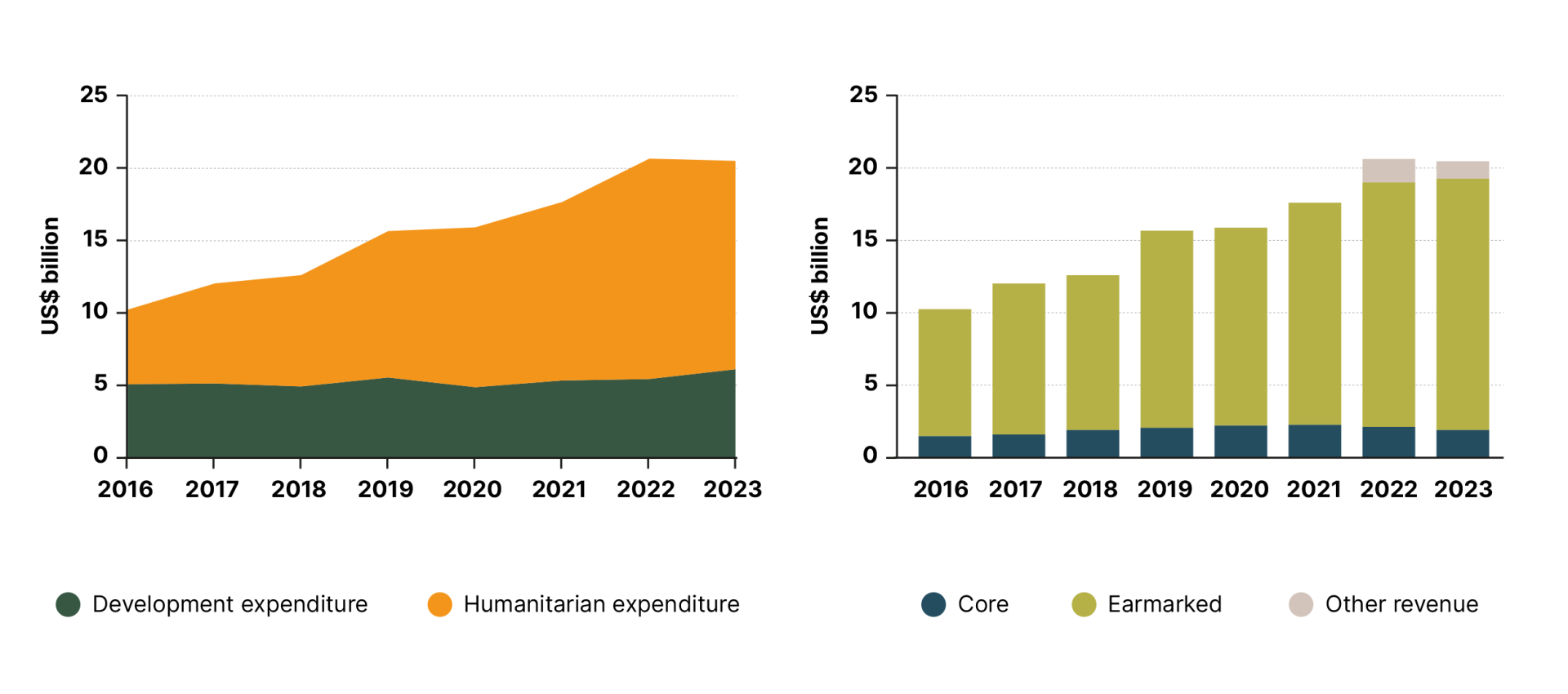The overlap between crisis-affected and low-income countries also aligns closely with the category of least developed countries (LDCs).80 Many LDCs are either currently experiencing or recovering from conflict. In 2023, 54% of the crisis-affected countries were also classified as LDCs.81 This section therefore examines UN expenses in support of countries facing some of the most severe and multidimensional development challenges.
Figure 34 illustrates UN spending in LDCs from 2016 to 2023. The left-hand panel presents the disaggregation by humanitarian and development assistance, while the right-hand panel shows the breakdown of expenses by core, earmarked and other funding.82 UN support to LDCs over the period displayed steady growth, peaking at US$ 20.6 billion in 2022 before a slight decline to US$ 20.5 billion in 2023. As the left-side panel shows, the recent reduction in expenses was largely driven by a fall in humanitarian assistance from US$ 15.2 billion to US$ 14.4 billion. This shift raises questions about funding shortfalls and whether we are seeing an emerging change in donor preferences.
The right-hand panel of Figure 34 reveals that allocations to LDCs are funded primarily through earmarked resources, which accounted for between 82% and 87% of total expenses over the period. Only 9% of 2023 operational activities in LDCs were funded by core resources, further emphasising the extent to which the UN’s support to LDCs remains dependent on earmarked funding. This reliance is a worrying indicator of the vulnerability of UN assistance in these settings, where flexible, predictable resources are very much needed.
UN development and humanitarian expenses in least developed countries, 2016–2023 (US$ billion)

Source: Report of the Secretary-General (A/80/74-E/2025/53). Historical data from various reports.